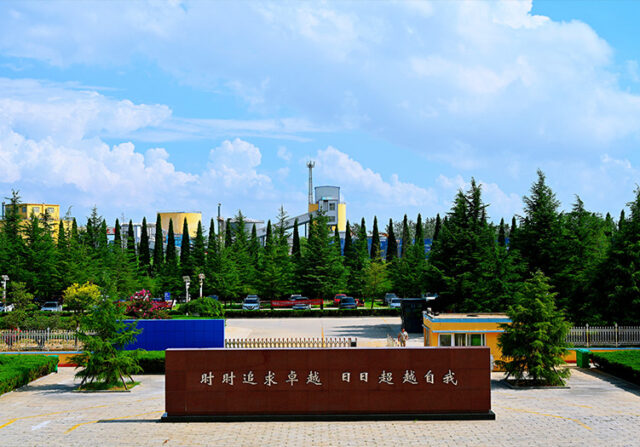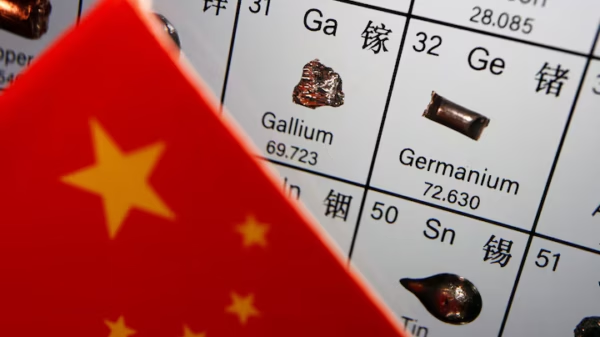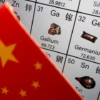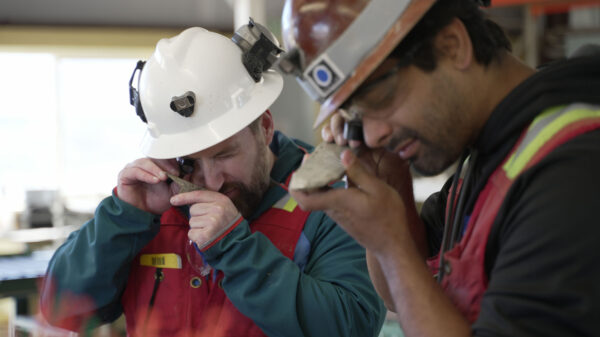There are generally two reasons why gold prices go through the roof. Typically, fear and uncertainty and the loss of purchasing power. And they’re not exactly separate.
When people lose confidence in markets, governments, or currencies—whether due to recessions, wars, banking crises, or political instability—they often flock to the yellow metal as a safe haven. At the same time, when money loses purchasing power through inflation, excessive money printing, or debt-driven policies, gold becomes more attractive as a reliable store of value. In both cases, investors turn to gold to preserve their wealth when fiat currencies appear vulnerable.
The spot price of gold has been hitting and re-setting all time highs for months now.
As of May 16, 2025, the spot price is approximately USD$3,200 per troy ounce.
As a result, this marks a 0.8 per cent decline on the day and a 3.3 per cent drop for the week, representing gold’s steepest weekly loss since November 2024. The downturn is attributed to a strengthening U.S. dollar and easing concerns over U.S.-China trade tensions, which have reduced the metal’s appeal as a safe-haven asset.
That price reflects a certain amount of calamity, but conversely it also reflects a certain amount of opportunity.
High gold prices are terrible for investors, but they are absolutely great for gold producers.
It boosts profit margins for producers, attracts investor interest, increases cash flow for exploration, and improves balance sheets—fuelling growth like asset diversification, dividends, and acquisitions.
Gold producers in this market represent a significant opportunity for the savvy investor to take advantage of the gold zeitgeist without taking out a mortgage on their house.
Here are five key companies making big moves in this climate.
Calibre Mining
In February 2025, Calibre Mining Corp (TSE: CXB) (OTCMKTS: CXBMF) (FRA: WCLA) and Equinox Gold Corp (TSE: EQX) (NYSEAMERICAN: EQX) (FRA: 1LRC) announced a merger to create one of the largest gold producers in the Americas. The combined entity will become the second-largest gold producer in Canada, with a diversified portfolio of assets across the Americas. Furthermore, this strategic move aims to enhance operational efficiencies and shareholder value.
Calibre merger with Equinox represents a transformative moment in the sector.
The combined company said it expected production of over 800,000 ounces annually.
It operates a diversified portfolio of assets across Canada, the United States, Brazil, and Nicaragua. Additionally, Calibre brings the Valentine Gold Mine in Newfoundland, which is scheduled for production in mid-2025. Equinox, meanwhile, contributes operating mines like Aurizona in Brazil, Mesquite and Castle Mountain in California, and Los Filos in Mexico.
The merger creates a top-tier mid-sized gold producer. It ranks among the five largest mid-tier producers globally. Furthermore, it becomes the second-largest gold company headquartered in Canada, behind only Agnico Eagle Mines Ltd (NYSE: AEM) (TSE: AEM).
Additionally, the merger allows for cost reductions and stronger free cash flow. The combined group plans to reinvest in exploration and mine development. Both companies also share a focus on sustainable practices and strong local partnerships.
This is not simply a scale-driven deal. It’s a strategic alignment of complementary assets and growth ambitions. With rising gold prices and increasing institutional interest, Calibre and Equinox now have greater leverage in the global gold market.
Read more: Calibre Mining reports solid Q1 results; receives court approval for Equinox Gold merger
Read more: Calibre securityholders give assent for Equinox Gold merger
Barrick Mining
This year has to be the worst on record for Canadian-based precious metals miner formerly known as Barrick Gold.
Initially, the company has decided to rebrand itself from Barrick Gold Corporation to Barrick Mining Corp (TSE: ABX) (NYSE: NYSE). This is largely regarded as the single of a strategic shift to emphasize copper alongside its gold operations. However, Barrick states that gold remains central to its identity, even as the company projects copper to constitute 30 per cent of its production by 2029.
The company changed its New York Stock Exchange ticker symbol from ‘GOLD’ to ‘B’ to reflect this broader focus. The spate of bad press may have also had something to do with it.
Barrick’s issues have become somewhat complicated by downsizing and political strife in countries where it does business.
For example, in April 2025, Barrick agreed to sell its 50 per cent stake in the Donlin Gold Project in Alaska to billionaire investor John Paulson and NovaGold Resources (TSE: NG) (NYSE: NG) for up to USD$1.1 billion. This divestment allows Barrick to streamline its portfolio and focus on assets with higher returns (and transition into copper).
Furthermore, despite strong financial performance—reporting USD$474 million in net earnings for Q1 2025—Barrick faces significant challenges in Mali. In January, the Malian government seized approximately three tonnes of gold from the Loulo-Gounkoto mine, valued at around USD$245 million. The regime cited alleged tax non-compliance. This action led to the suspension of operations at the site and the closure of Barrick’s Bamako office. CEO Mark Bristow disclosed that the company is incurring $15 million monthly to maintain the mine during this dispute.
The outcome remains uncertain even despite sky high gold prices, posing risks to Barrick’s operations.

Barrick president and CEO Mark Bristow. Image from Richard Drew via AP.
NevGold Corp
Vancouver-based gold junior NevGold Corp (CVE: NAU) (OTCMKTS: NAUFF) (FRA: 5E50) has expanded its focus beyond gold by identifying significant antimony mineralization at its Limousine Butte Project in Nevada.
Surface samples have revealed antimony concentrations up to 10 per cent. Consequently, this bodes well for the company’s prospects as it’s now positioned to tap into the U.S. critical minerals market.
The company is actively re-evaluating historical drill data, focusing on antimony.
Antimony is vital in various applications, including flame retardants, batteries, and military equipment. Its strategic importance has led to its designation as a critical mineral by the U.S. government. NevGold’s focus on antimony, alongside gold, aligns with national interests and market demand. The company’s dual-resource strategy enhances its profile in the mining sector, offering potential for growth and investment.
China holds a dominant position in the global critical minerals supply chain, refining over 80 per cent of rare earth elements. This control poses significant risks to Western nations seeking secure, diversified sources for clean energy and defense.
The company’s strategy aims to optimize resource estimates and enhance project value to take advantage of this issue. NevGold’s approach positions it to contribute to domestic supply chains, reducing reliance on foreign sources
NevGold’s recent spate of assays pulled back significant oxide gold-antimony mineralization.
Recent drilling at Resurrection Ridge yielded notable results, including 2.19 g/t AuEq over 64.0 meters (0.72 g/t Au and 0.33 per cent Sb), with a higher-grade interval of 10.86 g/t AuEq over 4.5 meters (1.43 g/t Au and 2.10 per cent Sb).
All of this is with the elevation in gold prices.
Read more: NevGold raises $5M for promising gold-antimony prospects in Nevada
Read more: NevGold closes its Nutmeg Mountain acquisition with Goldmining for $3 million
Zhaojin Mining
Globally, the race for gold is just as hot as the race for critical minerals. Maybe even hotter. And China will not be denied.
Zhaojin Mining Industry Company Limited (HK: 1818) is one of China’s leading gold producers, headquartered in Zhaoyuan, Shandong Province—a region renowned as “China’s Gold Capital.”
Zhaojin integrates gold exploration, mining, processing, and smelting operations. The company also operates in copper mining and smelting, as well as other investment activities.
Chinese mining company Zhaojin Mining acquired a controlling interest in Australian-listed Tietto Minerals for approximately A$733 million in 2024. Furthermore, this acquisition grants Zhaojin an 88 per cent stake in the Abujar Gold Project in Côte d’Ivoire. The mine commenced commercial production in early 2023. The company expects it to produce an average of 170,000 ounces of gold annually over the next nine years.
In the first quarter of 2025, Zhaojin’s revenue increased by 53.5 per cnet year-over-year to RMB 3.04 billion. This growth was subsequently driven by elevated gold prices and increased production volumes.
When compared to major global gold producers, Zhaojin’s market capitalization is significantly smaller. As of March 2025, Newmont Corporation (TSE: NGT) (NYSE: NEM) (FRA: NMM) has a market cap of USD$49.43 billion, Agnico Eagle Mines stands at USD$49.60 billion, and Barrick Mining is valued at USD$33.04 billion.
While Zhaojin is a leading gold producer within China, its global market presence is comparatively modest ranging at HKD 68.23 billion or about USD$8.8 billion.

The Xiadian gold mine in China. Image via Zhaojin Mining.
NexGold Mining Corp
NexGold Mining Corp (CVE: NEXG) (OTCMKTS: NXGCF) emerged in 2024 from the merger of Treasury Metals Inc., Blackwolf Copper and Gold Ltd., and the acquisition of Signal Gold Inc.
This consolidation created a multi-asset, Canadian-focused gold developer with a combined 4.7 million ounces of Measured and Indicated Mineral Resources.
NexGold also aims to achieve over 200,000 ounces of annual gold production from its Goliath Gold Complex in Ontario and the Goldboro Gold Project in Nova Scotia.
The Goliath Gold Complex encompasses the Goliath, Goldlund, and Miller deposits. A 2023 Prefeasibility Study projects a 13-year mine life with average annual production of 109,000 ounces in nine years.
The project also boasts a post-tax Net Present Value (NPV) of USD$336 million at a gold price of $1,750 per ounce, with an Internal Rate of Return (IRR) of 25.4 per cent.
At a gold price of USD$2,150 per ounce, the NPV increases to USD$652 million with a 41.4 per cent IRR. Pre-production capital expenditures are estimated at USD$335 million, with a payback period of 1.92 years.
In Nova Scotia, the company has committed to a 25,000 meter drill campaign at the Goldboro Gold Project.
This program aims to infill specific areas of the open pit Mineral Resource to improve geological and grade continuity and potentially upgrade certain areas of Inferred and Indicated Mineral Resources.
The drill results will inform a planned update to the Goldboro Mineral Resource Estimate, which will also include drilling completed in 2023 and 2024 at the western extension of the Goldboro Deposit.
.
Calibre Mining and NevGold Corp are both sponsors of Mugglehead news coverage
.














